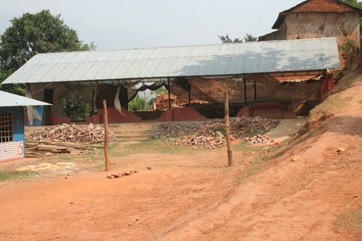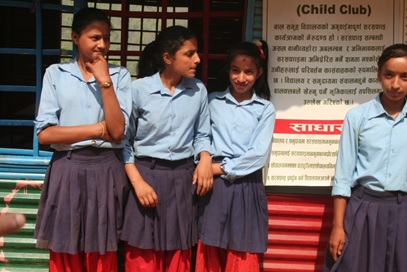On April 25, 2015, an earthquake, magnitude of 7.8 Richter scale, shook the country of Nepal causing massive devastation to the houses, roads, heritage sites, public buildings and school and college buildings. The death toll would have been more if it were in any other school days than Saturday. The ill-fated disaster was followed by hundreds of major and minor aftershocks that caused further damage to the already weakened infrastructures. The earthquakes took the lives of more than 8500 people, thousands of injuries and made millions homeless.
On April 25, 2015, an earthquake, magnitude of 7.8 Richter scale, shook the country of Nepal causing massive devastation to the houses, roads, heritage sites, public buildings and school and college buildings. The death toll would have been more if it were in any other school days than Saturday. The ill-fated disaster was followed by hundreds of major and minor aftershocks that caused further damage to the already weakened infrastructures. The earthquakes took the lives of more than 8500 people, thousands of injuries and made millions homeless.
One of the sectors that had been severely affected by the disaster was the education sector. The series of earthquakes destroyed more than 25000 classrooms in about 8000 schools. Literally, the disaster had jeopardized the education system in many parts of Nepal. In Kavre alone, one of the earthquake affected districts, most of the school buildings were completely damaged. The remaining school buildings were also not in proper condition to run the classes as most of them was partially damaged and that the students and teachers feared to go inside. So the classes were operated in an open ground. But the strong heat of the sun, wind and the rains did not allow for the smooth operation of the classes there too.
 At this juncture CIUD, in association with Action Aid Nepal, took an initiative to build temporary learning center (TLC) in thirteen different schools of seven villages of Kavre District.
At this juncture CIUD, in association with Action Aid Nepal, took an initiative to build temporary learning center (TLC) in thirteen different schools of seven villages of Kavre District.
One such TLC was constructed at Shree Indrawati Secondary School at Jyamdi. After the close consultation with the school management, CIUD technical team prepared a layout of the proposed TLC. With the help from school and local people, CIUD team prepared building in about a week with the support provided by Action Aid Nepal. Most of the materials used in making the TLCs were galvanized iron sheets and locally available bamboos.
 A teacher of that school says, “It was very difficult to run school without safe classrooms. The students didn’t show up in their classrooms and the parents were also not ready to send their wards in the school. Soon after the construction of TLC, students attended in their classes more than previous days. Now this TLC runs two classes, in which 90 students are studying”. According to students and teachers, TLC is becoming a key indicator to improve their learning environment. Sita Parajuli, a student, remarks, ‘TLC has helped resume my class. Because it is painted with different colors, our TLC has given us the learning environment and a new hope too.’
A teacher of that school says, “It was very difficult to run school without safe classrooms. The students didn’t show up in their classrooms and the parents were also not ready to send their wards in the school. Soon after the construction of TLC, students attended in their classes more than previous days. Now this TLC runs two classes, in which 90 students are studying”. According to students and teachers, TLC is becoming a key indicator to improve their learning environment. Sita Parajuli, a student, remarks, ‘TLC has helped resume my class. Because it is painted with different colors, our TLC has given us the learning environment and a new hope too.’
